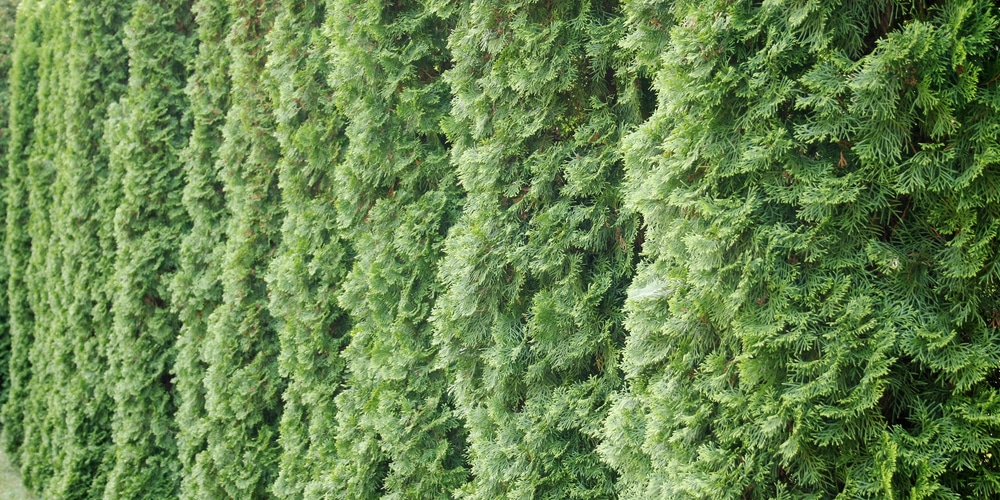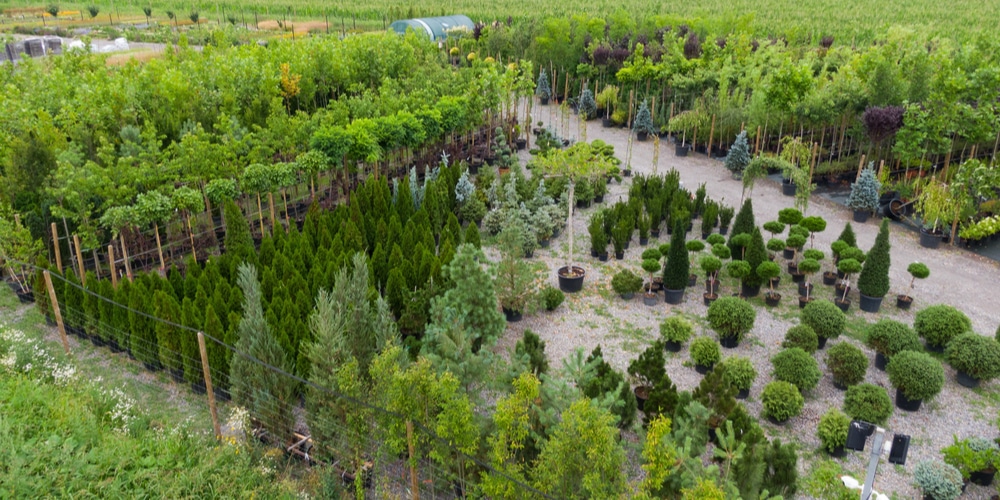The Green Giant and Emerald Green are two of the best arborvitae varieties you can add to your landscape. Both are extra tough, have excellent deer and pest resistance, and can decorate your yard or outdoor space for decades.
However, they do have their differences, which we outline in our green giant arborvitae vs emerald green arborvitae comparison. Let’s check out each arborvitae in terms of size, appearance, maintenance, climate tolerance, and use in the landscape.
Green Giant Arborvitae vs Emerald Green Arborvitae
Size and Appearance
As per its name, the Green Giant is among the tallest and widest in the arborvitae group. The tree can grow up to a massive 40 feet in height and have a spread of around 20 feet or so.
The Emerald Green, on the other hand, is much tamer at 12 feet with a spread of 4 feet.
Although they come from the same tree species, emerald green and green giants have minor differences between them. The emerald green variety assumes a somewhat even and columnar growth habit, while the green giant shapes out like a cone, with a wider bottom.
As far as color is concerned, Emerald Green Thuja has a brighter green hue than the Green Giant arborvitae.
Landscape Use
Both arborvitae species can be used as standalone specimens in the yard. However, you will want to choose the Green Giant if you’re looking for a privacy screen or hedge that can cover a large area. Thuja trees are great in this regard since they grow so quickly, and the green giant is no exception.
That said, the Emerald Green is more suited for smaller yards, as well as when you want something that can fit in borders, the driveway, or in any tight space. You can even put Emerald Green in a container so you can move it around as needed.
Maintenance and Growth Rate
The Emerald Green and Green Giant have roughly the same growth rate, shooting up and outwards at five feet per annum in ideal conditions. You can grow them in virtually any soil type, from clay to sandy and neutral or acidic.
Although Thujas require full sunlight, they’ll be more than happy to sit in partial shade as long as you give them adequate watering.
Arborvitae has a neat growing habit, which means they do not need as much pruning as other privacy trees. The green giant may grow up to 40 feet tall, but you can easily curb its height and give the tree the shape you want with a few occasional snips here and there.
Heat and Cold Tolerance
Thuja trees are popular across the US since they can adapt to nearly any climate. Emerald Green is rated hardy in zones 3 through 8, while the Green Giant can be grown in zones 5 to 9.
The USDA growing zone classification means that he Emerald Green arborvitae is tougher when it comes to cold temperatures, while the Green Giant is better at tolerating hot weather and sunny days.
If you’re living in zones 5 to 8 then you can pick any variety you like since you’re assured that both trees will do well in your environment.
However, in zones 9 then the Green Giant should be the preferred arborvitae, while in zones 3 and 4 the Emerald Green should take precedence. It’s worth noting that emerald green can withstand temperatures of up to minus 40 degrees F, while the green giant can withstand temperatures of up to minus 20 degrees F.
Overall Toughness
You can’t go wrong with arborvitae in your landscape. This tree species is known for its excellent resistance to diseases and pests that would bring an evergreen to its knees, including various fungi and bagworms.
Arborvitae also exhibits a degree of deer resistance, which means that the animals won’t normally snack on them unless they can’t find other plants or fruits to eat.
As far as breakage is concerned, you don’t have to worry- both green giant and emerald green keep their branches sturdy and they don’t fall off easily, even in rain, wind, or snow.
Both Thuja species are very tough and are likely to come back year after year. It’s worth noting that you should observe the proper planting space between each tree so that they will grow to the maximum height and spread.


